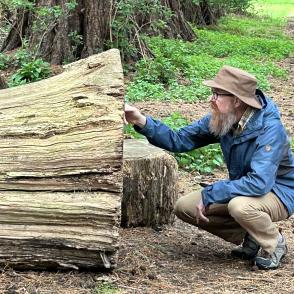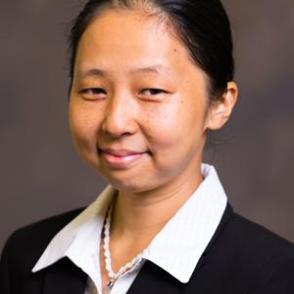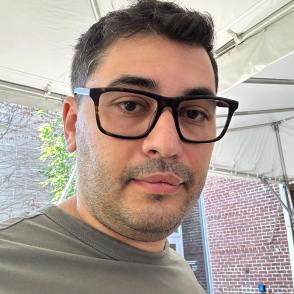

The Center for Teaching, Learning, and Assessment supports the principled implementation and integration of Generative Artificial Intelligence (GenAI) in higher education when and where it promotes
This position is grounded on the following seven principles:
Far from being merely a gimmick or a flash-in-the-pan, AI has increasingly infiltrated professional work and many people’s daily lives. We believe that these technologies present fundamental changes to writing, multimodal creating, and professional workflows. Students graduating with understanding of and competence in disciplinary application of AI will be better prepared for future professional and personal aspirations.
Because we see AI as transformative for and increasingly a fundamental aspect of education and work, it is our goal to maximize the affordances and mitigate its limitations. We are committed to nurturing conversations and offering resources to aid you in that endeavor.
We believe that now more than ever, ongoing pedagogical development is necessary. Many concerns educators have regarding the implications of AI, and particularly students’ use of it, relate to pedagogical approaches that predate AI. Good pedagogical practice accounts for the broader context in which teaching occurs. If the context has changed because of AI tools, then we need to continue to reflect on and develop our pedagogy and practices in light of those changes.
While the rising influence of AI on professional and academic contexts may require us to update our pedagogical practices, we recognize that SoTL can provide valuable resources for evidence-based research that may inform our responses to AI tools. CTLA is dedicated to familiarizing you with the best research and scholarship related to teaching and learning in the context of AI.
We recognize that practitioners (faculty, staff, students, and others) need to know how to engineer prompts, select particular AI applications, understand the affordances and limitations of different platforms, and so forth. However, real agency with AI requires that we understand the ethical contexts both narrowly, in terms of our ethical practices with AI, and broadly, in terms of larger ethical concerns, such as inherent biases embedded in programming or training, exploitation of human trainers of LLMs, and power consumption of servers.
We recognize that AI tools can give false positives; false negatives; may misclassify the work of non-native English speakers, neurodivergent writers, and others with learning differences as AI-generated; and that there are ethical concerns regarding privacy and student ownership of texts that may be processed by third-party apps without their consent. We further understand that as third-party applications, AI-detectors often operate as “black boxes,” providing little insight or transparency as to how they arrive at their conclusions. We encourage faculty and programs to think carefully before utilizing these systems, which can often result in removing humans from the loop of negotiating what academic integrity means.
We recognize that faculty, staff, and students are concerned about the implications of AI for higher education, and that everyone wants to ensure they are doing the right thing regarding these tools. These concerns may provoke a desire for an institutional response that clearly defines how and when AI should be used at the university. However, we believe positions regarding AI use are better developed within specific contexts by the stakeholders most closely engaged with those domains.
Just as what constitutes “good writing” varies from discipline to discipline, what constitutes “good AI use” may vary as well. Our mission is to provide you with training and resources for pedagogical development to support you in the process of developing effective policies, course design, and pedagogical implementations. However, as the expert in your context, you will be central in adapting your practices and materials to respond effectively to innovative technologies such as AI tools.

Paul Shovlin is assistant professor of English. He serves as the lead GenAI in teaching and learning faculty fellow. Shovlin has been leading and facilitating faculty development programming on generative artificial intelligence and teaching and learning for the center since fall 2022.
Shovlin co-chaired President Lori Stewart Gonzalez's Dynamic Strategy Learn Committee (opens in a new window)and participated in Provost Elizabeth Sayrs' AI Think Tank, leading the ethics group. In addition to facilitating three successful CTLA faculty learning communities on GenAI in higher education, Shovlin has opened the conversation university-wide, hosting AI Coffees with his FLC co-facilitator, and he has shared his work on GenAI in workshops and panels.

I am a Professor researching the role of nutrient cycles in forest ecosystem dynamics and I serve as the Chair of Environmental and Plant Biology. I aim to empower my students with a solid understanding of scientific concepts, fostering critical thinking and awareness of environmental issues.
I envision that such knowledge will catalyze their own journey of learning beyond their academic years. I'm convinced that generative AI (GenAI) can significantly support this educational objective, but it necessitates guided use and regular practice to be truly beneficial. I anticipate that the ability to proficiently utilize GenAI will become an essential competency required by employers for all college graduates.
I think custom GPT chatbots, like the one I developed named SoilSage, will be extremely beneficial for education and research. This chatbot acts as an interactive teaching assistant in my lecture and lab capstone course, aiding students in achieving learning goals and enhancing their critical thinking abilities.
The chatbot is designed to assist students in learning through questioning and exploration, steering them towards the right answer in order to develop their critical thinking skills. In groups, students will be taught to develop and instruct their personalized chatbots, which will function as tutoring aids and interactive study companions.
My graduate students can utilize this chatbot as a dynamic tool for conducting a literature review of my research program and for assisting in the generation of hypotheses. They will be taught how to build a chatbot that functions as an interactive lab journal.
Nevertheless, all my actions with GenAI are aimed at mitigating faculty workloads, enhancing student participation and their overall learning experiences.
Faculty Webpage: https://www.ohio.edu/cas/deforest

My interest in using AI as a teaching tool began in the spring of 2023 while teaching ET3200 Engineering Thermodynamics and when ChatGPT was relatively new. After teaching the classic statements of the second law of thermodynamics, I asked students to have ChatGPT explain the second law without technical jargon so that even a kindergarten child would be able to understand. The answers were impressive. Since then, I have wondered whether I could integrate generative AI in a more meaningful way.
AI can transform teaching and learning in many ways. The number one benefit, I think, is to offer personalized learning. Being an immigrant from a country with the world's largest population, I used to equate western higher education with promoting individuality and individualized learning. Now, as an educator, I feel compelled to offer this to my students, but often catch myself doing the opposite as a result of large class sizes and time constraints. AI-powered assistance, such as virtual tutoring, real-time feedback and automated grading can be advantageous to both instructors and learners.
While I am hopeful that higher education can benefit substantially from AI-enhanced teaching and learning, I am also aware of the potential implications. Do we teaching students to rely on AI to learn everything? With AI, are we going to promote concrete thinking and demote abstract thinking? Will students taught by AI be more conformative and less creative? These are the questions I hope to address with the collaboration of the CTLA faculty fellows.

In December 2022 I discovered a new world of possibilities when Open AI widely released ChatGPT 3 to the masses. Immediately, I began exploring the affordances and limitations of these new tools: creating multiple-choice questions, creating case studies to apply new concepts to real world situations, and writing drafts of documents. As a former classroom teacher and now teacher educator, I have always been an early adopter of new technologies.
My research on digital writing showed that typing slowed second-grade students' composing speed but improved their spelling. As a teacher educator, I embed technology throughout my courses using tools my undergraduate students will use in their future classrooms and tools to enhance engagement and learning. Last spring one of my undergraduates and I presented how we use AI to enhance our teaching at the Ohio Educational Technology Conference.
As educators we have a responsibility to prepare our students for this ever-shifting technological landscape. Artificial intelligence is utilized in many of the apps and programs we use daily, from the map software that helps you navigate to a new part of town to Grammarly helping you improve your writing.
As an assistant professor of instruction for teacher educators at Ohio University Zanesville, I am deeply committed to preparing our students with the best Ohio University has to offer. Our students on the regional campuses often include nontraditional students that may enter our classrooms with less technology experience. While we may think of our students as digital natives, we must continue to build critical digital literacy skills that will allow them to understand the affordances, limitations, and ethical use of these tools.
As an AI Faculty Fellow, I look forward to continuing the work that I began as a member of the AI Think Tank and in the AI Faculty Learning community last spring. I am excited that Ohio University continues to be a leader in the nation and across the region preparing our students for this new reality.
